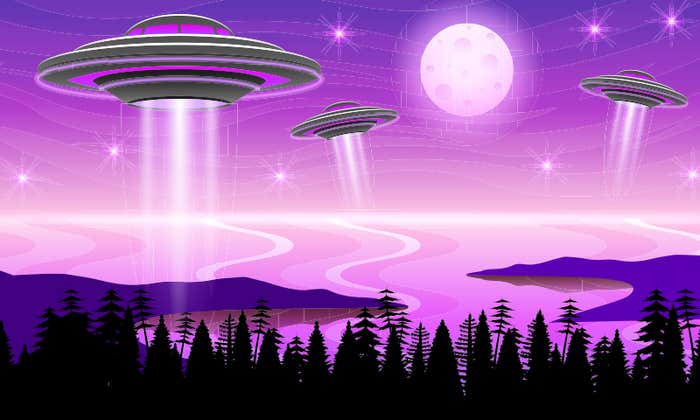
Some art makes a lot of sense. If we look at a painting or a photograph of a gorgeous view, its beauty feels natural. The reason for this is that the kinds of landscapes people tend to like correspond to places that would have been a good place for our ancestors to camp1: elevated, with a view of water, wildlife, and diverse flora, especially flowering and fruiting plants.
But there are many popular works of art that people enjoy that are less straightforward. Music, for example, can establish patterns, and then add something unusual, perhaps a “blue note” in jazz, that only later gets resolved. Much of what makes music satisfying involves building and resolving tension. In mystery stories, the confusion of what happened is finally resolved at the end, where the murderer is discovered, and all of the hanging plot threads are resolved. This is also how scientific papers are written: They start with a mystery, and by the end of the work offer a potential solution.
The kinds of things we like to experience are in a sweet spot between having recognizable patterns and incongruity.
Poetry is often deliberately written to obfuscate any obvious meaning,2 and studies show that this works—different poetry readers can have wildly different interpretations3 of the same poem, often based on personal associations4 from their own lives. It’s little wonder that people find compelling interpretations they generate that relate to their own lives. A similar effect happens when interpreting sacred texts.
Then there are examples of very absurd, senseless works of art that enjoy enduring popularity. This is captured in the category, “Absurdism,” in which the work of art doesn’t give solutions to the incongruity, and the audience is never expected to be able to resolve it. Only with Herculean efforts are people able to come up with their own, idiosyncratic interpretations, but often without any confidence that their own interpretation was the only right one. In the literature genre of Absurdism, the fact that it can’t be figured out is the whole point5—communicating a message of meaninglessness in life.
Occasionally, feature-length Absurdist films are released, such as Matthew Barney’s The Cremaster Cycle, but more often the more absurd pieces are short—people just don’t have the attention span to watch hours of incomprehensible content. I remember when I was running a theater company in Atlanta, most plays would be sensible stories, featuring goal-driven protagonists, conflicts, climaxes, and resolutions. But when a show would feature a series of 11-minute plays, all the crazy stuff came out. We can see this on a larger scale with music video. With such a short time scale, directors are free to create something a bit wilder.
This is how scientific papers are written: They start with a mystery, and by the end offer a potential solution.
This spectrum of meaning in art has a corresponding spectrum of neural processing. It turns out that the kinds of things we like to experience are in a sweet spot between having recognizable patterns and incongruity. Too much of either one is boring. Too much pattern and we feel we have nothing more to get from it, and too much nuttiness and we lose any hope of finding an underlying pattern.
In the brain, it’s likely that pattern finding is related to the pleasure (opioid) system, and the desire to understand incongruity comes from activating the motivation and drive (dopaminergic) system. The desire to consume things we don’t understand stems from the evolutionary need we have to seek out and learn things about the world, which has created a brain built to learn, rather than to be competent right out of the womb.
Although we are all curious creatures, we differ from person to person in how much incongruity we like—people with a high “openness to experience,” one of the so-called “big five” personality traits, tend to prefer arts with more weirdness, dissonance, and incongruity.
Our innate, insatiable curiosity, our drive to seek out what we don’t understand, and even to struggle with it, explains the appeal of the absurd, from puppet shows to the plays of Eugene Ionesco. How it balances against our desire for the understandable can also help to characterize who we are.
Jim Davies is a professor of cognitive science at Carleton University. This post is based on his book Riveted: The Science of Why Jokes Make Us Laugh, Movies Make Us Cry, and Religion Makes Us Feel One with the Universe. His sister is novelist JD Spero.
References
1. Orians, G.H. An ecological and evolutionary approach to landscape aesthetics. In Penning-Rowsell, E.C. & Lowenthal, D. (Eds.), Landscape Meanings and Values Allen and Unwin, Sydney, Australia (1986).
2. Dissanayake, E. Homo Aestheticus: Where Art Comes From and Why University of Washington Press, Seattle (1995).
3. Richards, I.A. Variant Readings and Misreading Technology Press of Massachusetts Institute of Technology (1960).
4. Rosenblatt, L.M. The Reader, the Text, the Poem: The Transactional Theory of the Literary Work Southern Illinois University Press, Carbondale, IL (1978).
5. Cornwell, N. The Absurd in Literature Manchester University Press, New York, NY (2006).






























